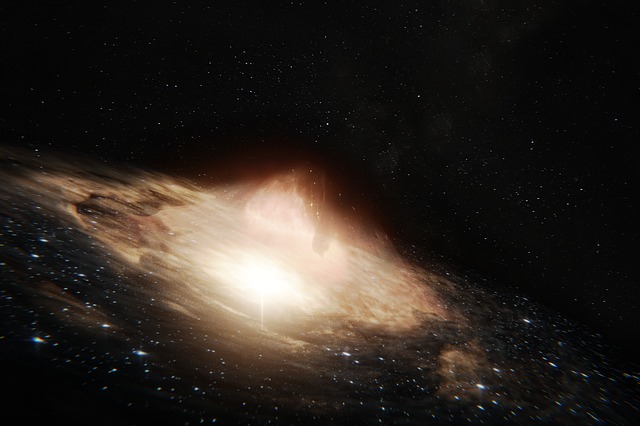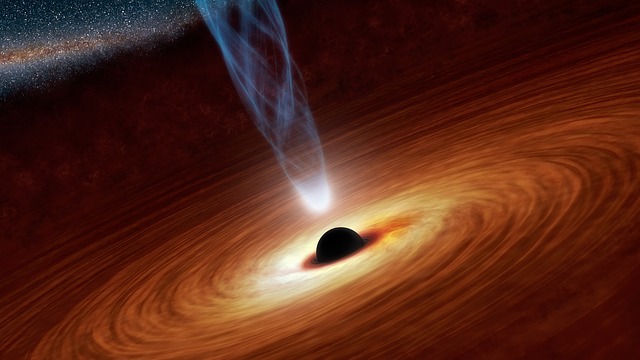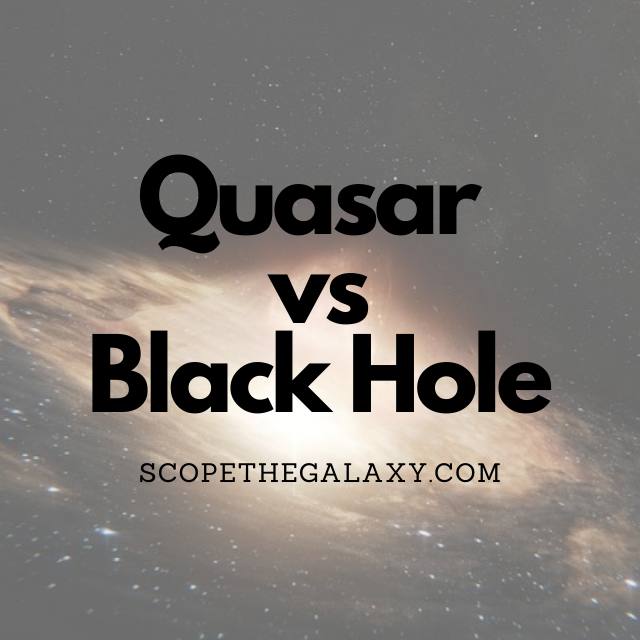*This post may contain affiliate links. This means we may make a commission if you purchase an item using one of our links*
Quasars and black holes are linked in the sense that quasars require a supermassive black hole to form. Other than this link, the two are very different from each other.
The main difference between a quasar and a black hole is that quasars are amongst the hottest and most luminous entities in our universe whereas black holes are amongst the coldest and darkest celestial objects in outerspace. Practically speaking they are opposites of one another.
For a more thorough breakdown of both of these interstellar entities along with how they differ from each other, continue reading.
What Is A Quasar?
Table of Contents

Quasars are extremely bright celestial objects powered by supermassive black holes, found in the center of galaxies. They tend to also be referred to as an active galactic nucleus or AGN for short.
Quasars were initially called quasi-stellar radio sources however, this name isn’t entirely consistent with the type of waves they generate as only around 10 percent of all quasars that have been discovered produce strong radio waves.
As for how bright they can be, quasars have been observed to exceed levels that are upwards of 100 times the brightness of the galaxies that hold them.
Although not an absolute, many scientists believe these bright objects are formed when light escapes at the edge of a supermassive black hole just before reaching its event horizon. Some light gets drawn in whilst other particles jet out at a tremendous pace, which is how the erratic and powerful light of a quasar forms.
At this moment in time, we have discovered roughly 750,000 unique quasars extending across various ages, with the farthest from us roughly 13 billion light years away.
Therefore, not only are these enigma’s extraordinarily powerful but, they can even be used as time capsules to observe how our universe came to be, relatively close to when the theorised big bang occurred.
What Is A Black Hole?

A black hole is created when a large star about 3 – 4 solar masses large collapses below its Schwarzschild radius causing a supernova explosion. The density of the star creates a massive gravitational pocket and pulls everything within its vicinity into it.
The edge of a black hole is known as the event horizon and once something crosses this point, there is no escape. The gravitational pull of a black hole is so immense that even light is sucked inside.
All objects pulled in are subjected to an unimaginable crushing gravitational force as they are pulled toward the super dense end point of the black hole known as the singularity.
Black holes can be split into a variety of different types such as supermassive black holes, intermediate mass black holes, and stellar mass black holes.
Stellar mass black holes are formed as described above by the death of a large star collapsing inward on itself. An intermediate mass black hole is slightly larger than a stellar mass black hole and may form by acquiring stars within its reach although not many have been discovered so little is still known about them.
A supermassive black hole can be found at the center of a galaxy and consumes stars and smaller black holes to obtain its massive size – millions of times larger than our Sun.
Can Quasars Escape Black Holes?
Although the gravity and magnetic field of a black hole can bring anything within its event horizon towards it, if said object is outside of this horizon, any form of light whether it be those generated from a supernova or a quasar, would not be pulled in and would instead warp around the black hole.
On the other hand, if the light of a quasar does find itself within a black hole’s event horizon, no quasar would be able to escape.
This is because the velocity needed to escape the event horizon would need to be faster than the speed of light, which is the fastest speed in the universe as far as we know.
The Similarities Between A Quasar And Black Hole
For a quasar to function as they do, it will need to surround a supermassive black hole. Therefore, black holes are linked in the sense one requires the other to function.
Other than the above necessary connection, the two are genuinely very different from one another.
The Differences Between A Quasar And Black Hole
As for what the differences between a quasar and a black hole are, they include the following:
- Quasars are the brightest objects in our universe whereas black holes are the darkest entity in the universe as no light can escape them.
- Quasars only last for around 10 million years whilst black holes in theory can last for around 2.6 * 10^69 years before it dissolves. To put it bluntly, no black hole will be dying anytime soon.
- Quasars can reach temperatures around the 100 billion degrees celsius range whereas black holes are as close to absolute zero in temperature as anything can be.
- Quasars are formed when a supermassive black hole has extreme quantities of material (either when a young galaxy is forming or when 2 galaxies collide) surrounding it to form an extremely luminous and powerful accretion disc whereas your average black hole is formed when a massive star dies in a supernova explosion.
- Quasars are typically the size of our solar system which is around 4,000 times the diameter of the Sun (around 4 billion km) whereas the largest supermassive black holes are said to be around 126 billion km. The smaller ones tend to be around 60 – 600km based on the fact a black hole with the mass of the Sun would only be 6km in length.
- Black holes have magnetic fields and gravity so strong it can dilate the time surrounding them, whereas standing at the literal edge of a black hole for 1 minute would result in 700 years passing on Earth. On the other hand, scientists have observed no time dilation transpiring from quasars.
Summary
Quasars and black holes are both extraordinary with one object amongst the brightest in our universe and the other the complete opposite, whether it be temperature, lifespan, how they’re formed so on and so forth.
Although they do have a connection, both entities are very different from one another as their core functions are opposites.

